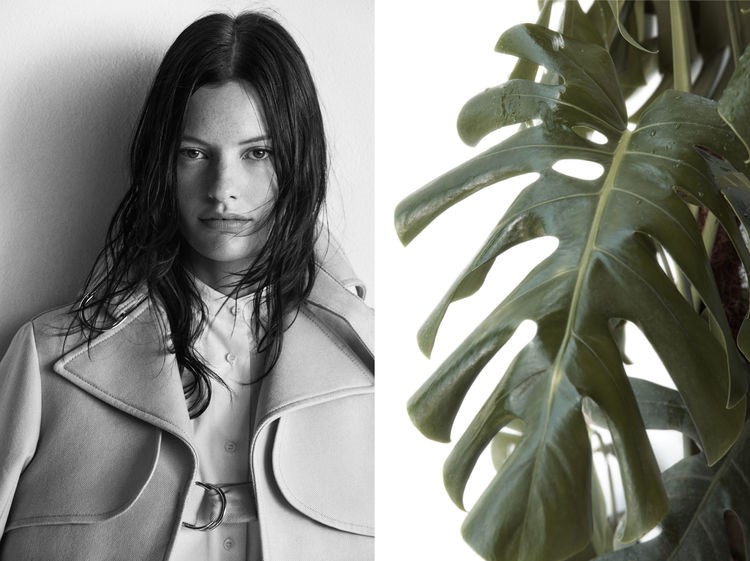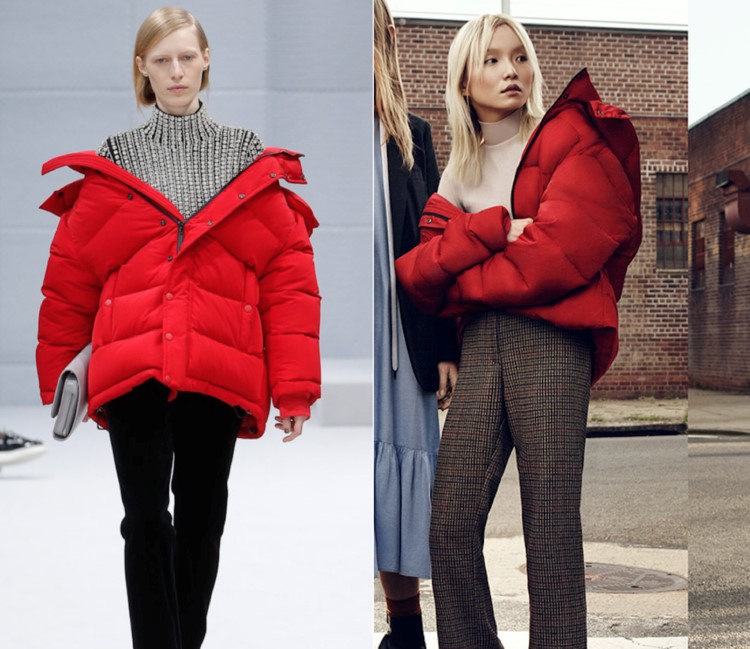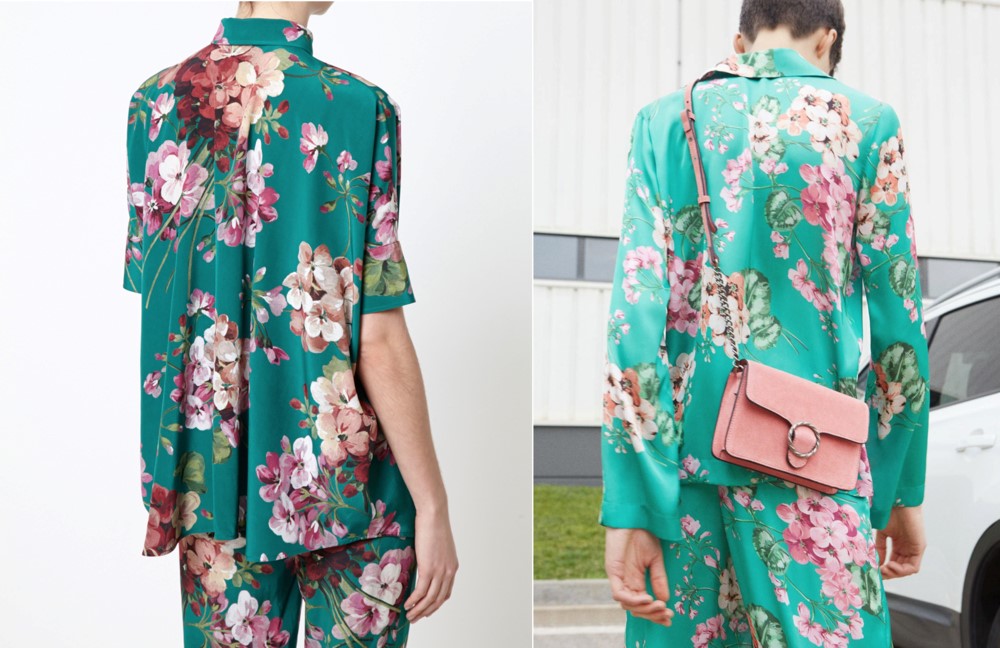Copyright Protection of Non-Utilitarian Designs under the Copyright Act of 1976
Designers in the high fashion industry face many obstacles in receiving intellectual property protection for the utilitarian aspects of their clothing. Congress has provided copyright protection only for original works of art, but not for industrial designs that embody utilitarian functions. See 17 U.S.C. 101. Copyright protection does not extend to utilitarian aspects of objects because it would open up a flood of litigation over exclusive monopoly rights that would “burden competition, raise prices, and also harm consumers.” See Star Athletica, L.L.C. v. Varsity Brands, Inc., Brief for United States as Amicus Curiae 5-6. This proves problematic, however, when art and industrial design are intertwined, especially in the fashion industry which combines aesthetic elements with utilitarian garments. Under the separability doctrine, these pictorial, graphic, and sculptural works on the design of a useful article are copyrightable so long as they “can be identified separately from, and are capable of existing independently of, the utilitarian aspects of the article.” See 17 U.S.C. 101. But what happens when pictorial, graphic, sculptural works are inseparable from the utilitarian aspects of a garment? See Star Athletica, L.L.C. v. Varsity Brands, Inc. provided fashion designers with newfound intellectual property protection for aesthetic aspects that are incorporated into utilitarian aspects of their garments.
Obstacles Designers Faced in the High Fashion Industry Prior to the Star Athletica Decision
It is without a doubt that fashion, namely high fashion, has now become a status symbol that relies heavily on its branding and aesthetic more so than any utilitarian value its designs may serve. So much of the value that these high fashion designs derive is from its rarity and accessibility to only the elite and wealthy. Accordingly, it is not too surprising that fast fashion powerhouses have copied these high fashion runway looks along with several other brand elements available to the more general public.
Fast fashion brands, i.e. Zara or Mango, have often tried emulating high fashion ad campaigns by recreating the featured garments for an exponentially lower price. For example, Celine’s ad campaign for the 2011 fall and winter collection consisted of models in a natural setting surrounded by aloe plants. Zara later emulated this in black and white during the Spring and Summer 2014 season and again during the Fall and Winter 2015 season with a minimalist focus on a model in black and white and an aloe plant.

A few other examples of this are pictured below where Zara emulated Balenciaga’s Fall and Winter 2016 collection with its red parka and comparable styling to Lotta Volkova or a cream colored trench coat with athletic zip up wear underneath for the Burberry Fall 2016 season, which was a distinctive look for that season featuring model Chris Wu.

The similarities between the campaigns are not entirely identical, and even if they were, there were not rigidly defined protections under the Copyright Act. Zara and other fast fashion powerhouses such as Mango and Forever 21 have a legally cognizable right to provide their own independent expressions about their fashion ideas. Accordingly, they continue to use these similarities with the intention that consumers create a psychological connection between the high fashion brand and the fast fashion brand. Fast fashion powerhouses strengthen these connections by recreating the styling, colors, and design to produce the same high fashion look elite fashion designers were inspired by without infringing logos, patents, or trademark protected designs. This leaves high fashion designers left fairly powerless and unprotected by copyright laws. This all changed with the holding of Star Athletica, L.L.C. v. Varsity Brands, Inc., which provided high fashion designers with much more expansive intellectual property protection.


Star Athletica, LLC v. Varsity Brands, Inc.: Progress Toward Copyright Protection of Fashion Design
In March 2017, the Supreme Court established a test for determining the copyright eligibility of design elements in fashion in Star Athletica, L.L.C. v. Varsity Brands, Inc. Respondent Varsity Brands, Inc. obtained more than 200 copyright registrations for two-dimensional designs that appear on their cheerleading uniforms. Respondent employed designers who sketched design concepts of uniforms consisting of “original combinations, positionings, and arrangements of elements which include V’s (chevrons), lines, curves, stripes, angles, diagonals, inverted V’s, coloring, and shapes.” 137 S. Ct. 1002, 1007 (2017). Respondent Varsity Brands, Inc. sued Star Athletica, L.L.C., a competitor that also markets cheerleading uniforms, for copyright infringement for using 5 of Respondent’s copyrighted designs. Id. The District Court granted the petitioner summary judgment holding that designs could not be conceptually or physically separated from the uniforms, and therefore were not copyrightable designs. Id. The Sixth Circuit later reversed this and concluded that graphics “could be identified separately and were capable of existing independently” of the uniforms under 17 U.S.C. 101. Id. Specifically, they found that the graphic designs were separately identifiable because “the designs and a blank cheerleading uniform can appear ‘side by side’ and . . . are capable of existing independently.” Id. The Supreme Court found these conflicting perspectives on the separability analysis warranted certiorari to resolve this widespread disagreement over the proper separability test. Id.

The Supreme Court relied solely on a statutory interpretation of 17 U.S.C. 101, rather than a free-ranging interpretation of the best copyright policy for the case at hand. See Mazer v. Stein, 347 U.S. 201 (1954). The Court looked at the “whole provisions of the law” to determine the meaning of 17 U.S.C. 101. See United States v. Heirs of Boisdore, 8 How. 113, 122 (1849). The statute provides that:
A pictorial, graphic, or sculptural feature incorporated into the design of a useful article is eligible for copyright protection if it (1) can be identified separately from, and 2) is capable of existing independently of, the utilitarian aspects of the article. 17 U.S.C. 101.
The Court focuses more on the second requirement, stating that the burden of proof for the first requirement is not that difficult to satisfy. See Star Athletica, L.L.C. v. Varsity Brands, Inc., 137 S. Ct. at 1010. The Court states that the trier of fact must determine whether the separately identified feature can exist apart from the utilitarian aspects of the article. Id. This means that it has to be able to exist on its own if its imagined independent from the useful article. Id. If it cannot be imagined separately from the useful article, then it is not a pictorial graphic or sculptural feature of the article itself, but rather as part of one of the utilitarian aspects of the garment. Id.
The Copyright Act provides that the owner of the copyright can reproduce this work copies on any kind of article regardless of whether it embodies a utilitarian property. See 137 S. Ct. at 1005. The Court states that this is a mirror image of 17 U.S.C. 113(a) which protects an authorship fixed on some tangible medium that is non-utilitarian and then later applied to a utilitarian object. Id. On the other hand, 17 U.S.C. 101 protects the art that is first fixed in the medium of a useful article. Id. Accordingly, the Court holds that the copyright protection extends to pictorial, graphical, or sculptural objects regardless of whether they are affixed to utilitarian or non-utilitarian objects. Id.
The Court held that this interpretation of the statute is consistent with a past holding in the Copyright Act’s history. Id. In Mazer, the Court held that the respondents owned copyright protection for a statuette that served as the base of the lamp and it was irrelevant if can be identified as a freestanding sculpture or lamp base. Id. The Copyright Office used the Mazer holding in the modern separability test to copyright law in section 101 of the 1976 Act. Id.
Using statutory interpretation and case law, this Court held that the surface decorations on the cheerleading uniforms can be considered separate under the separability test mandated in Section 101 of the 1976 Act. See 137 S. Ct. at 1006. They reasoned that if the decorations were removed from the uniforms and affixed to another medium, they would not copy the uniform itself. Id. They analogized that just as two-dimensional fine art are aligned with the shape of the canvas on which it is painted, these decorations are aligned with the shape of the uniform itself. See 137 S. Ct. at 1012. Respondents may only prohibit the reproduction of these surface designs; however, the Court holds that they have no right to prevent others from manufacturing a cheerleading uniform identical in shape, cut, or dimensions. See 137 S. Ct. at 1006
Ultimately, the design of the uniforms satisfy the requirements of Section 101 of the 197 Act because they 1) can be perceived as a two- or three- dimensional work of art separate from the useful article; and 2) would qualify as a protectable pictorial, graphic, or sculptural work either on its own or in some other medium if imagined separately from the useful article. 137 S. Ct. at 1016. Based on this interpretation, the Supreme Court affirmed the Court of Appeal’s judgment. Id.
Now high fashion designers can turn to this holding when any aesthetic design is affixed to a utilitarian design. This holding has revolutionized high fashion designers’ intellectual property interests for their designs in the high fashion industry that is victim to fast fashion’s intellectual property theft.

Elizabeth
Trade dress is defined as a name, symbol, or device, or any combination thereof, and covers the design of a product. Trade dress can be registered with the United States Patent and Trademark Office (USPTO) so that it is protected. In Wal-Mart Stores, Inc. v. Samara Brothers, Inc., the Supreme Court found that in actions for infringement of unregistered trade dress under §43(a) of the Lanham Act, a product’s design is only protectible where secondary meaning is showed. A product develops secondary meaning when the mark identifies the source of the product to the public.
It is interesting to think about how fashion law will change over the coming years as new technology develops. For example, an increasingly popular company, Rent the Runway, lends high fashion clothing and accessory items to customers for significantly less than their sticker price, thereby bridging the price gap between high fashion and fast fashion.
Jonathan
Justice Thomas’s ruling in Star Athletica has been mostly praised as a clarification and amalgamation of previous law relating to pictorial, graphic and sculptural copyright. Before Star Athletica, there were ten approaches that could be applied to determine the separability of the “useful article” and the “aesthetic feature” in order for the design to be eligible for copyright under 17 U.S.C. § 101. The Court espoused a two-pronged test that conformed to previous caselaw and also to an interpretation of the statute but the test, and Star Athletica itself, fails to completely clarify this difficult area. There are instances where the “aesthetic design” also possesses utilitarian features. Arguments in Court for Star Athletica stated that certain of the designs served to make the cheerleaders look taller and, thus, had utility but the Court stated: “[a]n artistic feature that would be eligible for copyright protection on its own cannot lose that protection simply because it was first created as a feature of the design of a useful article, even if it makes the article more useful.” So, certain useful portions of articles may be considered aesthetic features in some circumstances. It seems that a feature can be both useful and aesthetic, but what degree is permissible for it to be eligible for copyright? This wasn’t addressed in the opinion, so the topic of separability remains murky, and lower courts may not find as much guidance as they may like.
Rova
Fast fashion brands such as Zara or Mango often recreate garments inspired by other designers for a lower price. Depending on how the inspired, derivative work is created, it can be a lawful article or unlawful copy otherwise known as a “knock off”. In the fashion industry, the term knock-off refers to any article imitating or copying another article. Some derivative works are legal while others are infringing. Counterfeiting consists in manufacturing or distributing a product or a service bearing a mark that is identical or substantially indistinguishable from a registered trademark. Counterfeiting is always an infringement of intellectual property rights.
Trademark law and copyright law do not protect against all cases of derivative works, so fashion companies could not sue other companies for allegedly knocking-off their products and designs on grounds of counterfeiting in such cases. This decision does provide a greater degree of protection to fashion designers regarding useful articles(1).
As a general rule, for works created after January 1, 1978, copyright protection lasts for the life of the author plus 70 years after death. This duration can be considered as being unnecessarily long when applied to the fashion industry, since fashion trends tend to cycle through quickly. The copyright protection granted to a feature of an article of apparel will often be of limited value to the designer four collections or five years later for instance. An observable phenomenon in the fashion industry is the induced obsolescence of designs(2). A design first begins to spread and its value grows as fashion-forward consumers purchase the article bearing such design. As the design diffuses beyond the fashion-forward consumer to the ordinary consumer, the value of the design decreases, and the fashion-forward consumers lose interest for that design, waiting for a new attractive design(3). A fashion company would require protection on its designs the most during the period in which fashion-forward consumers purchase the articles bearing their designs, and ordinary consumers purchase them as well. Protection is less valuable to the fashion companies once the trend has ended.
Some fashion authors discuss whether extending copyright protection to fashion design as a whole would have more of a positive or negative impact on the fashion industry. Kai Raustiala and Christopher Sprigman argue that the minimal level of protection may stimulate innovation and creativity as designers need to create more to stay relevant in the industry, and that a certain amount of copying helps anchoring trends(4).
On the other hand, some fashion designers and associations such as the American Apparel and Footwear association support U.S. legislation, which would be closer to the protection of fashion design granted in European law. Indeed, European legislation provides stronger protection for fashion designers. The European Regulation on Community designs of 2001 is applicable to all Member States of the EU(5). This regulation provides uniform protection in these Member States.
Although copyright does not protect the utilitarian functions of an article, fashion designers may apply for a utility patent in order to protect the functional features of an article. To some extent, fashion designers can benefit from copyright, trademark, and patent law to protect their designs and their brand. This case extends the scope of that protection.
____________________________________
(1) Star Athletica, L.L.C. v. Varsity Brands, Inc.
(2) The Law, Culture, and Economics of Fashion, C. Scott Hemphill, Jeannie Suk.
(3) Fashion Law – A Guide for Designers, Fashion Executives and Attorneys, G. Jimenez, B. Kolsun, 2nd ed. 2014.
(4) The Piracy Paradox Revisited, Kal Raustiala, Christopher Sprigman
(5) European Council Regulation on Community designs https://eur-lex.europa.eu/legal-content/EN/TXT/HTML/?uri=CELEX:32002R0006&from=FR